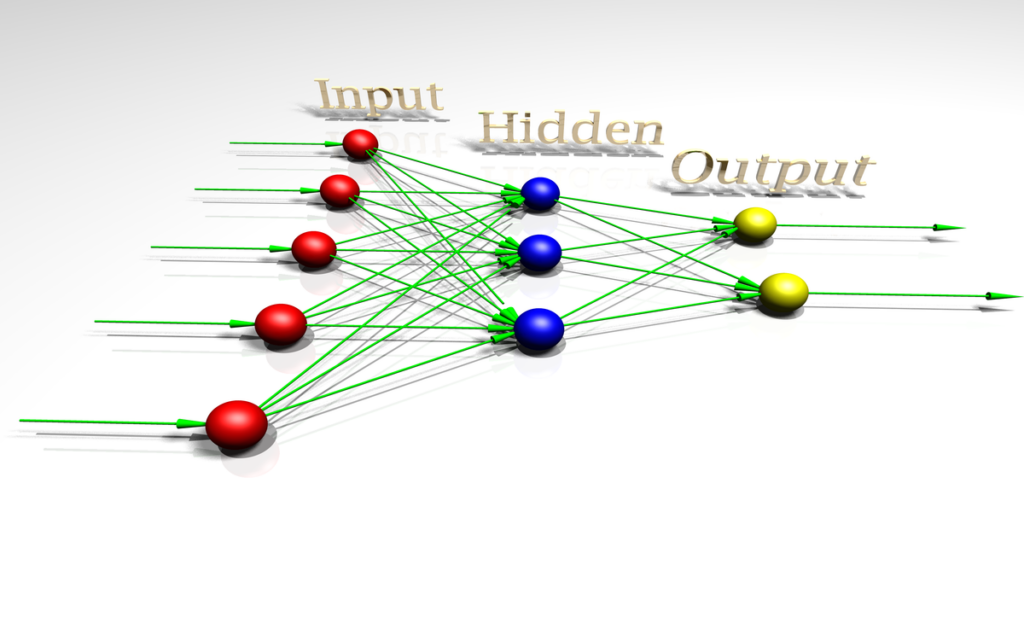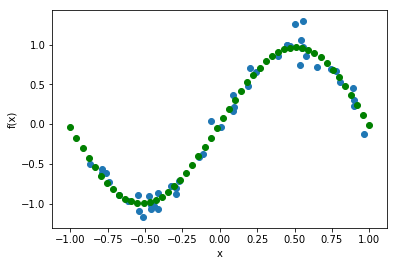In this tutorial we will explore the use of quantum neural networks in time series function forecasting using PennyLane. We will develop a variational circuit which is a continuous variable quantum neural network that learns to fit a one dimensional function by making predictions. The predictions will be the expectation value of the quantum node.

A quantum neural network (QNN) is a computational machine learning model that involves combining artificial neural networks and quantum information to develop more efficient algorithms. Currently, classical neural networks are challenging to train efficiently if the dimension of data is large. Quantum neural networks can be achieved by adding a quantum convolutional layer or simulating each perceptron as a qubit. The applications of QNNs are often in tasks which require variational or parametrized circuits and training of these neural networks happen in optimization algorithms. This is a type of programming known as differentiable computing.
The computation is implemented using continuous functions and calculating their gradient or derivatives. The gradients represent the rate at which to change the parameters of variational circuits so as to output expected value.
import pennylane as qml
from pennylane import numpy as np
from pennylane.optimize import AdamOptimizer
import matplotlib.pyplot as plt
import numpy as np
import pylab
import matplotlib as mpl
We will import the time series dataset. It should be placed in the same folder as this code. The dataset will be attached on Github.
data = np.loadtxt("sine.txt")
X = np.array(data[:, 0], requires_grad=False)
Y = np.array(data[:, 1], requires_grad=False)
Define the device to run the program. We will be using strawberryfields.fock, with 1 qubit or wire.
dev = qml.device("strawberryfields.fock", wires=1, cutoff_dim=10)
We will define the quantum layer using the algorithm presented in this paper
def layer(v):
# Matrix multiplication of inputs
qml.Rotation(v[0], wires=0)
qml.Squeezing(v[1], 0.0, wires=0)
qml.Rotation(v[2], wires=0)
# Bias
qml.Displacement(v[3], 0.0, wires=0)
# nonlinear transformation
qml.Kerr(v[4], wires=0)
We will encode the input x into a quantum state and execute the layers which will act as sub circuit of the neural network.
@qml.qnode(dev)
def quantum_neural_net(var, x=None):
# Encode input x into a quantum state
qml.Displacement(x, 0.0, wires=0)
#call layer(v) which will be the subcircuit of the variational circuit of the neural network
for v in var:
layer(v)
return qml.expval(qml.X(0))
The objective will be the square loss between target labels and model prediction and the cost function will be the square loss of the given data or labels and predicted outputs from the quantum neural network which will be the expected value of the quantum node
def square_loss(labels, predictions):
loss = 0
for l, p in zip(labels, predictions):
loss = loss + (l - p) ** 2
loss = loss / len(labels)
return loss
def cost(var, features, labels):
preds = [quantum_neural_net(var, x=x) for x in features]
return square_loss(labels, preds)
The weights of the network will be defined with values that are generated from the np.random.randn function will follows a normal distribution
np.random.seed(0)
num_layers = 4
var_init = 0.05 * np.random.randn(num_layers, 5)
print(var_init)
Using the Adam optimizer, we update the weights for 500 steps . More steps will lead to a better fit.
opt = AdamOptimizer(0.01, beta1=0.9, beta2=0.999)
var = var_init
for it in range(500):
var, _cost = opt.step_and_cost(lambda v: cost(v, X, Y), var)
print("Iter: {:5d} | Cost: {:0.7f} ".format(it, _cost))
We will use the values of the predictions in the range [-1,1]
x_pred = np.linspace(-1, 1, 50)
predictions = [quantum_neural_net(var, x_) for x_ in x_pred
We will plot the shape of the function that the quantum neural network has “learned” from the function and the predicted values. The green dots represent the model's predictions and the blue dots is what the actual function was
plt.figure()
plt.scatter(X, Y)
plt.scatter(x_pred, predictions, color="green")
plt.xlabel("x")
plt.ylabel("f(x)")
plt.tick_params(axis="both", which="major")
plt.tick_params(axis="both", which="minor")
plt.show()

We can see that the quantum neural network was accurate in predicting f(x) for a particular x by developing a variational circuit and varying the parameters or the weights using the Adam optimizer.
About
Support
Every week, our team curates the most important news, events, and opportunities in the quantum space. Our subscribers gain early access to opportunities and exclusive interviews with prominent individuals. You don't want to miss out.